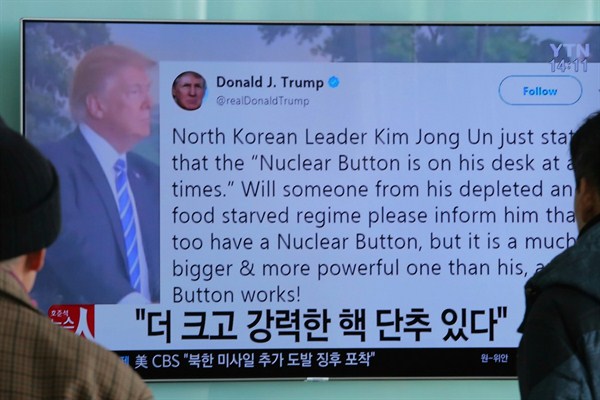In the coming weeks, President Donald Trump is expected to unveil the latest Nuclear Posture Review, outlining his administration’s thinking about U.S. nuclear policy and detailing plans for the future of the American arsenal. According to a draft leaked to The Huffington Post last week, the review, which reportedly has been sent to Trump for his approval, will mark a considerable shift in policy, overturning much of the thinking that has underpinned American nuclear strategy since the end of the Cold War. The Trump administration may well be ushering in a more dangerous, more expensive and more worrying nuclear era. Thresholds of nuclear use could lower, arms races could return, and norms on global nonproliferation and disarmament could become moribund. If that isn’t enough, the new strategy could also signal the end of a generation of U.S. nuclear reductions.
Consider the two key takeaways from the leaked Nuclear Posture Review. The first is the claim that the U.S. requires new types of nuclear warheads—specifically, new “low yield” devices—in order to meet changing security requirements. This is based on the logic that current U.S. nuclear weapons are too big to be used against some threats, particularly the possible use of low-yield nuclear weapons by Russia in a conflict with NATO, which could effectively self-deter the United States. New low-yield devices would involve placing “smaller” nuclear warheads on submarines and sea-launched cruise missiles—though smaller in this case would mean weapons with similar power to those that destroyed Hiroshima and Nagasaki in 1945.
The second is the warning that nuclear weapons could be used against a broader scope of threats, so-called “extreme circumstances,” including major conventional, chemical, biological and cyberattacks. As The New York Times put it, that “would permit the use of nuclear weapons to respond to a wide range of devastating but non-nuclear attacks on American infrastructure, including what current and former government officials described as the most crippling kind of cyberattacks.” While the U.S. has never had a “sole purpose” doctrine—that is, only threatening a nuclear strike as a response to a nuclear attack—this will be interpreted as a widening rather than narrowing of the potential use of nuclear weapons. That would be a major departure not just from the Obama administration’s 2010 Nuclear Posture Review, but all previous administrations that have formulated a nuclear strategy since the end of the Cold War.

